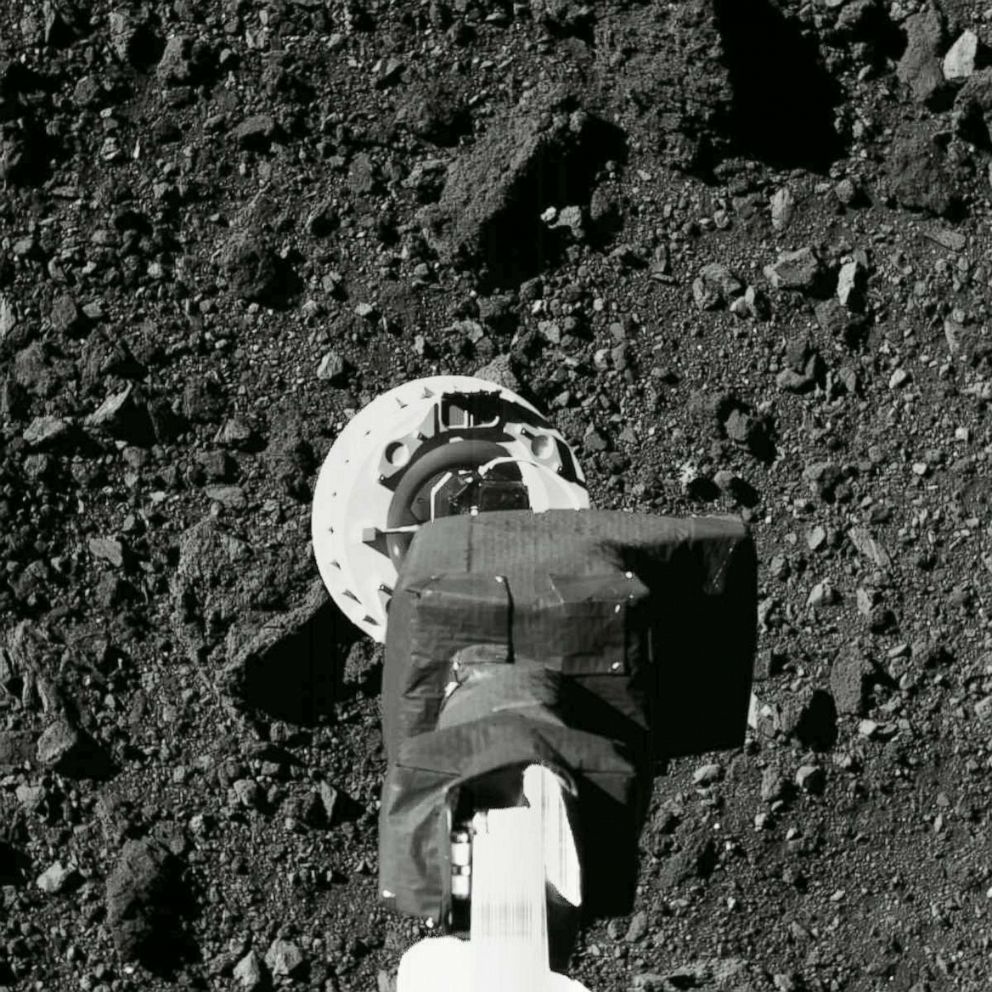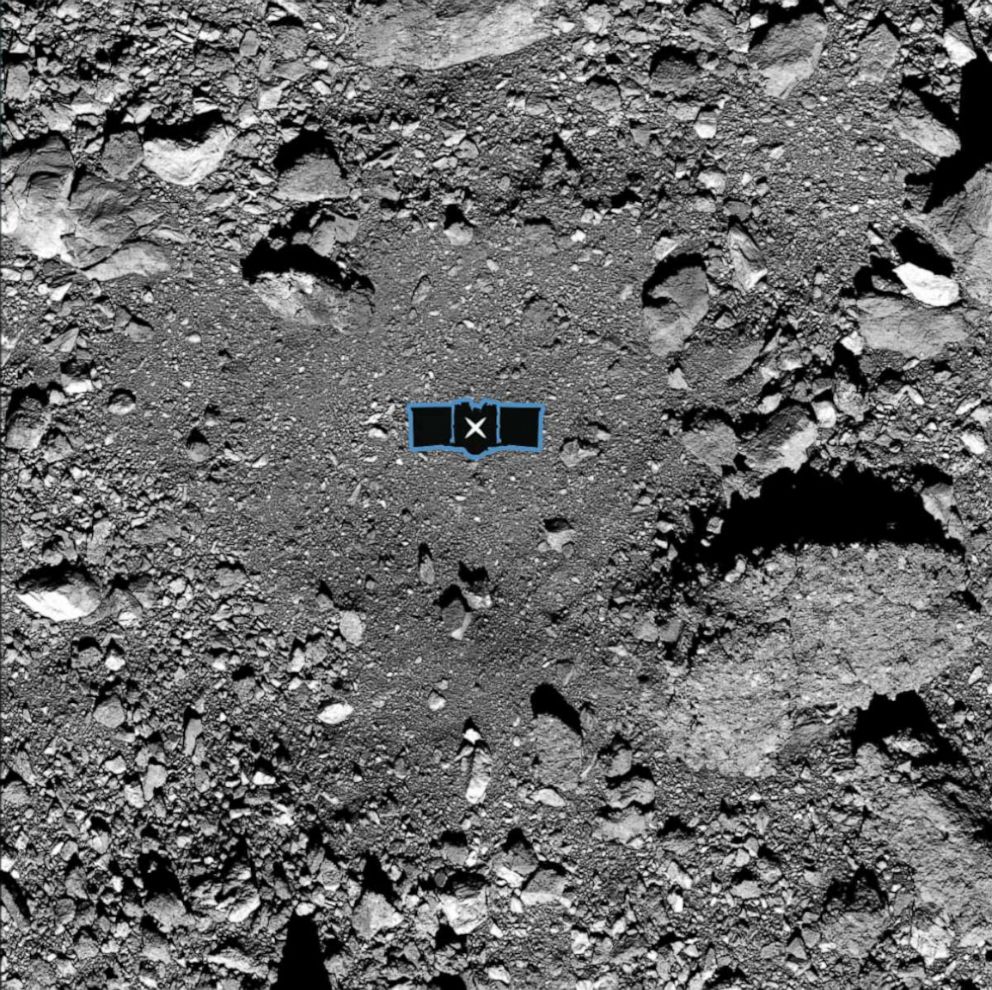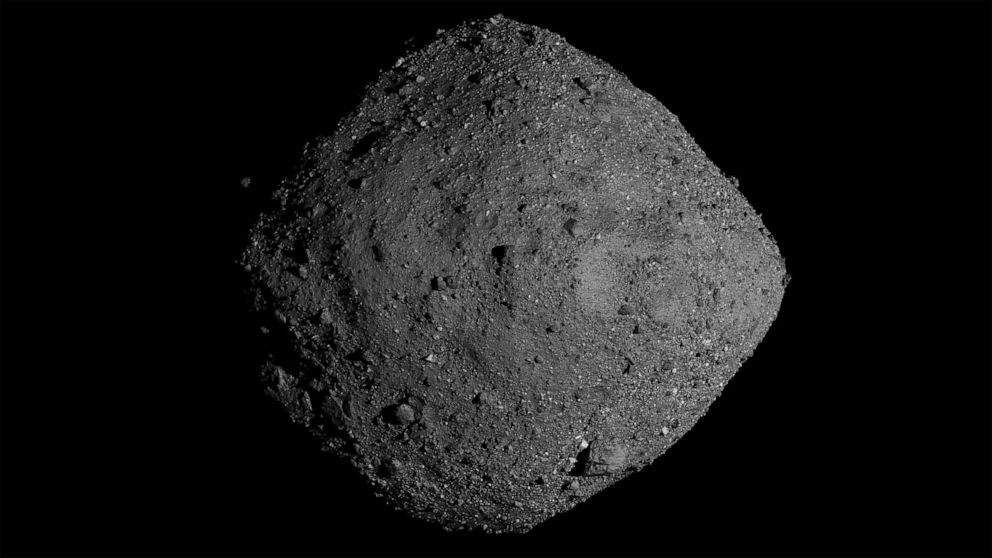NASA skims surface of asteroid to collect sample
The spacecraft kissed the surface of astroid Bennu a little after 6 p.m. ET.
A NASA spacecraft briefly touched the surface of an asteroid, attempted to collect a sample of extraterrestrial rocks and then successfully propelled itself away in a history-making mission on Tuesday.
The OSIRIS-REx -- an acronym for Origins, Spectral Interpretation, Resource Identification and Security-Regolith Explorer -- was attempting a touch-and-go sample collection on the asteroid Bennu, the first mission of its kind for NASA.
Prior to Tuesday, only Japan had successfully obtained an asteroid sample.
All preliminary information indicates the sample collection was a success, but NASA teams warned ahead of the event that it could take days to know for sure if the spacecraft obtained asteroid samples.
NASA administrator Jim Bridenstine tweeted his congratulations to the entire team Tuesday evening, saying that the spacecraft was expected to return "the largest sample brought home from space since Apollo."
"If all goes well," he added, "this sample will be studied by scientists for generations to come!"
Thomas Zurbuchen, the associate administrator of NASA's Science Mission Directorate, said at a news conference ahead of the mission on Monday that "it feels like something really amazing is about to happen."
"This is a historic first mission for NASA, returning an asteroid sample, and it is hard. It is hard even without COVID, but COVID made it even harder," he added, lauding the team effort that went into Tuesday's big event.

The spacecraft launched four years ago and has been orbiting Bennu for two years. On Tuesday it briefly touched its surface with a robotic arm around 6:12 p.m. ET, grabbing a sample in less than one minute.
The spacecraft is expected to remain in Bennu's orbit until 2021, when it will begin its journey home, landing back on Earth with the sample sometime in 2023.
Osiris-REx's descent into the Bennu asteroid took more than four hours. At first, the spacecraft moved toward the asteroid at an average speed of approximately 0.2 mph -- about the speed of a tortoise -- according to NASA.
Just before 2 p.m. ET on Tuesday, Osiris-REx began de-orbiting maneuvers to slowly descend to the surface of the asteroid and reach the Nightingale landing spot. First, the spacecraft fired its Attitude Control System thrusters to get out of Bennu's orbit, which NASA tweeted was a success.
NASA and Lockheed Martin's live coverage of Osiris-REx's descent kicked off at 5 p.m., sharing the latest on the spacecraft's slow descent to the surface of the asteroid.
As of 5:35 p.m. ET, the slow-moving drop to the Nightingale landing spot had been succesful so far, and the Osiris-REx began moving its solar panels into a Y-wing configuration so that the spacecraft can touch down safely. The Y-wing configuration keeps the solar panels up and out of the way as the spacecraft nears the asteroid.
At 5:51 p.m. ET, NASA confirmed the checkpoint burn was complete. This means the spacecraft began descending much more quickly toward Bennu’s surface. Next up was the matchpoint burn, which changes the spacecraft’s flight path to match Bennu’s spin and more precisely reach the Nightingale landing spot.
After a succesful matchpoint burn, the spacecraft took about ten minutes to reach the surface of Bennu and begin its history-making scooping.

The spacecraft and asteroid are some 207 million miles from Earth during the touch-and-go mission, so it takes approximately 18.5 minutes for signals to travel from Earth to the spacecraft -- meaning "live" broadcasts are actually 18.5 minutes after events happen in space.
This also meant that ground control was not be able to command the activity during the event, so the spacecraft completed it almost entirely autonomously.
The OSIRIS-REx was slated to collect at least 2 ounces of Bennu's rocky material -- about the size of a Snickers bar -- to bring back to Earth. If successful, this will be the largest sample returned from space since the Apollo program, according to NASA.
"Asteroids are like time capsules floating in space that can provide a fossil record of the birth of our solar system," Lori Glaze, the planetary science division director at NASA, said in a news conference Monday. "They can provide valuable information about how the planets including our own came to be."
While Glaze acknowledged asteroids can also pose an impact threat to Earth, she offered reassurance that there are currently no known asteroids that are an impact threat to Earth over the next 100 years. Bennu, Glaze said, has a 1-in-2,700 chance of hitting Earth at the end of the next century.

Dr. Jamie Elsila, a research scientist at NASA Goddard Space Flight Center, said one of the primary goals of the mission "is to understand the origins of the solar system, and that includes the origins of life on Earth."
While they are not looking for life or evidence of life on Bennu, Elsila said they are excited about the organic compounds they expect to find on Bennu, and "the role that asteroids might have played in delivering these life-forming compounds to Earth."
Zurbuchen said Bennu is "almost a Rosetta Stone."
The asteroid "tells the history of our entire Earth, of the solar system, during the last billions of years -- and the violent evolution of that history as well," Zurbuchen said.